
Lot 81
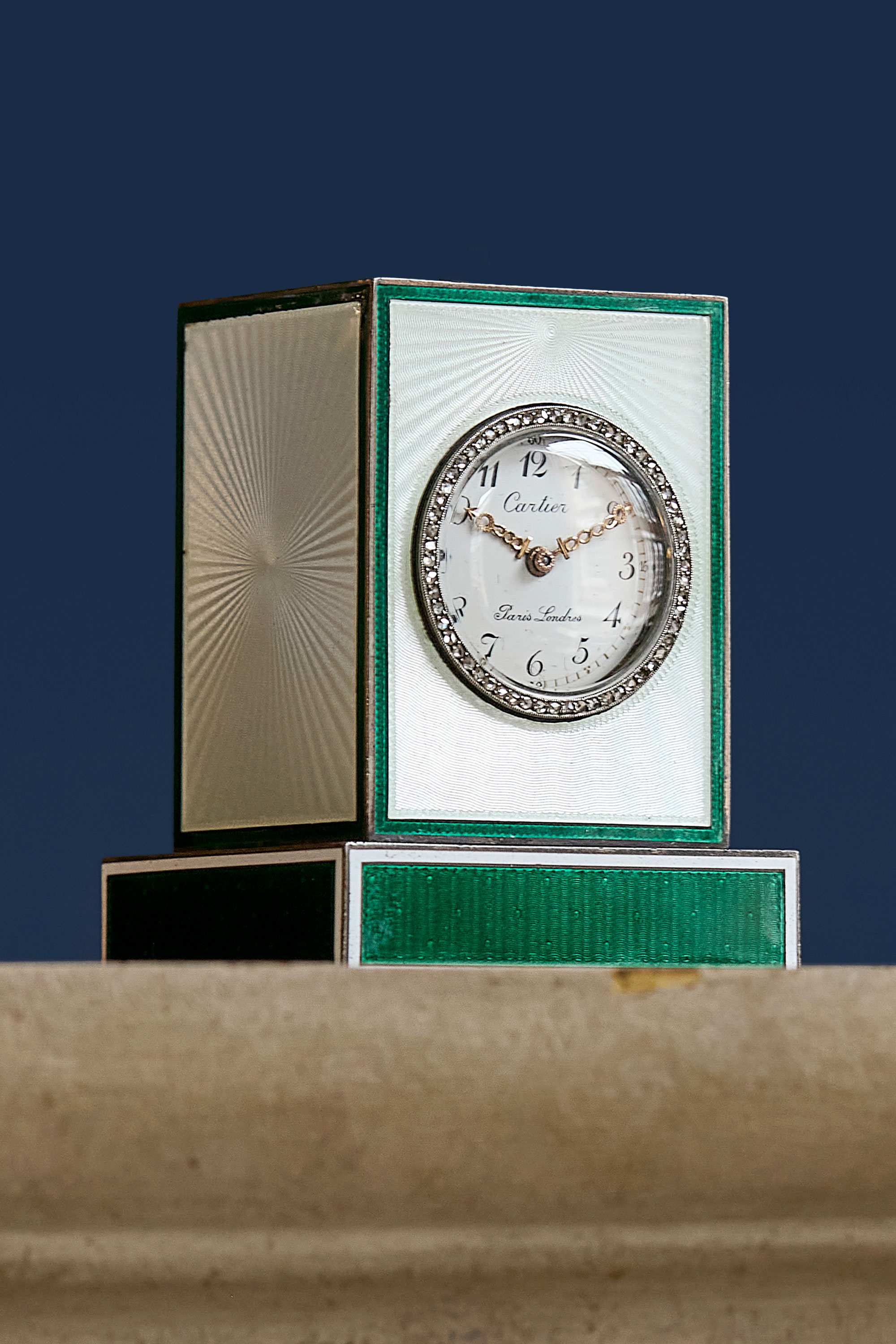
Cartier, Paris-London. An exceptional silver, diamond, white and green guilloche enamel eight day clock with ivory baseplate Y
No. 1799, 3055, Movement No.11354, made circa 1910
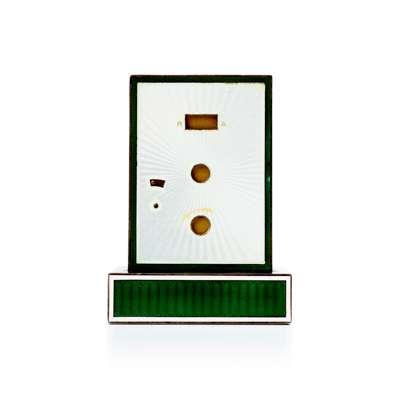

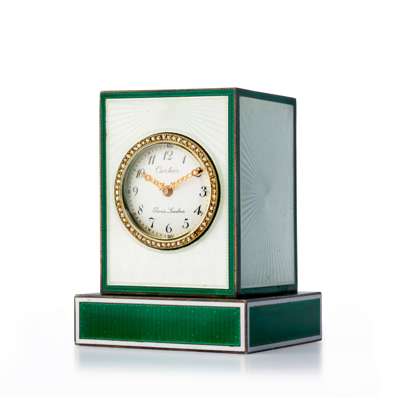
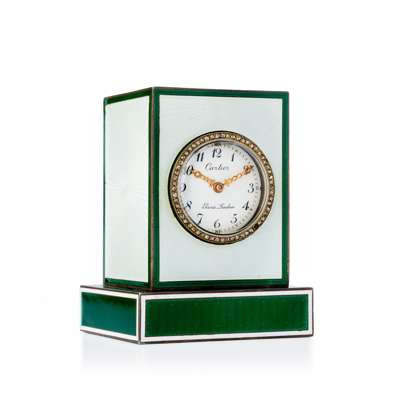
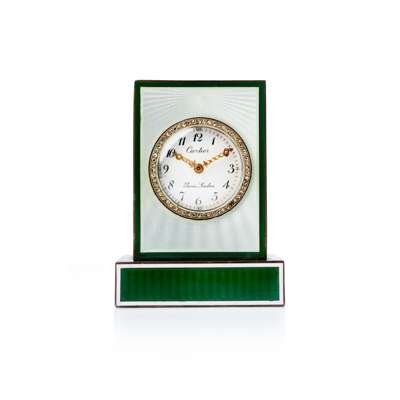



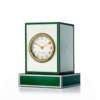
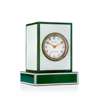
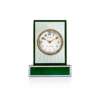

Auction: 20 November 2025 from 14:00 GMT
Description
Key-wind brass eight-day movement with cut and compensated bimetallic balance, circular white enamel dial with black Breguet style numerals, outer minute track, gilt decorative hands, rectangular case with white guilloche enamel sides to green borders, the bezel millegrain set with rose-cut diamonds, the base with reversed green guilloche sides to white border, ivory baseplate. Signed Cartier Paris-Londres on dial, signed Cartier on baseplate, numbered on the baseplate and movement.
Accompanied by a carved lapidary animal and powder blue Cartier card box.
Dimensions
Total height 74mm, base width 55mm.
Provenance
Property of a noblewoman, this is the first time this clock has been offered publicly for sale.
Footnote
"This Cartier clock is just magnificent and from the same owner as the canary yellow miniature version we sold in May 2025. The green enamel is stunning and would date it to around 1907 making it one of the earliest. Curiously, the base is enamelled rather than the usual hard stone or footed we often see." - Charles Tearle, Head of Watches
This clock represents a period in Cartier's production which was highly influenced by the masterful works coming out of Russia made by Karl Fabergé. The influence on Cartier's output began following the 1900 Universal Exposition held in Paris which its in known Louis and Pierre Cartier visited.
Cartier started to produce works in what is now referred to as the “Russian Style” in 1906. They even employed the same suppliers and workshops as Fabergé. Their enamelwork was created using the same techniques. The use of this particular shade of green enamel was particularly popular in circa 1907-1910.
Unusual for this particular model of clock is the presence of an enamelled foot, instead of one made of a carved hardstone or with four individual modelled feet. Similarly, the upper has a factory small circular metal plate with cut square aperture, when consigned, the associated carvel animal was rudimentary attached to the upper via a later glued wooden pin (now removed.) With no obvious purpose, it can be assumed the aperture was designed to support a decorative finial or monogram.
For a discussion of Cartier's enamel timepieces of this period see Chaille, François and Cologni, Franco, The Cartier Collection; Timepieces, Flammarion, 2006, page 30-101. “From Fabergé the Cartier clock took its shape, its enamel technique, and its Louis XVI feel. In contrast, its sober elegance, subtle garland decoration, and combination of blue and green were all specific to Louis Cartier's own style, and showed that he could replace the Russian master's prodigious effects with an equally impressive gracefulness.”
Please be aware that this lot contains material which may be subject to import/export restrictions, especially outside the EU, due to CITES regulations. Please note it is the buyer's sole responsibility to obtain any relevant export or import license. For more information visit http://www.defra.gov.uk/ahvla-en/imports-exports/cites/
Sold in compliance with UK Government and APHA regulations, with (non-transferable) exemption registration reference XM2T44LA












